Linda Rodriguez's Blog
December 11, 2019
Continuing Native American Heritage Month--"At the Stomp Dance"
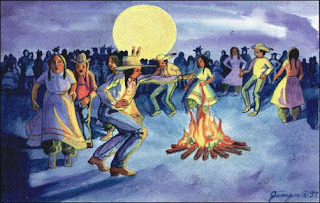 "Contemporary Stomp Dance" by Marcine QuenzlerOn the last day of Native American Heritage Month, I said I wanted to extend it at least to the end of the year, since it was the only time mainstream America paid any attention to or acknowledged that there were still Natives living in this contemporary world beside them, that we weren't just historical and extinct. That last may just be wishful thinking on some parts, since we are so inconvenient as reminders of the results of a history of genocide and ethnic cleansing that mainstream America chooses to forget.
"Contemporary Stomp Dance" by Marcine QuenzlerOn the last day of Native American Heritage Month, I said I wanted to extend it at least to the end of the year, since it was the only time mainstream America paid any attention to or acknowledged that there were still Natives living in this contemporary world beside them, that we weren't just historical and extinct. That last may just be wishful thinking on some parts, since we are so inconvenient as reminders of the results of a history of genocide and ethnic cleansing that mainstream America chooses to forget.Today's poem is about the stomp dance, which is the Cherokee equivalent of
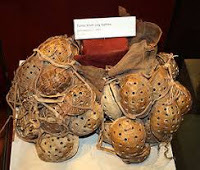 church services--never forgetting that many Cherokee can be and are active in both traditional Cherokee ceremonies and Christian church services. I wrote this poem based on the stomp dances of my childhood down in Oklahoma. In it, the women all use shell shakers made of turtle shells. These were and are treasured heirlooms, handed down many generations through the line of female ancestors. Today, women are much more likely to use tin can shell shakers as more environmentally sustainable. The original
church services--never forgetting that many Cherokee can be and are active in both traditional Cherokee ceremonies and Christian church services. I wrote this poem based on the stomp dances of my childhood down in Oklahoma. In it, the women all use shell shakers made of turtle shells. These were and are treasured heirlooms, handed down many generations through the line of female ancestors. Today, women are much more likely to use tin can shell shakers as more environmentally sustainable. The original 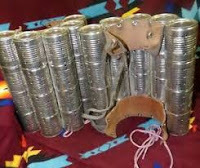 turtle shells were harvested when turtles were in great abundance and the turtles were eaten by the family before the shells were cleaned and used in ceremony and then handed down for generations. As the environment has changed and turtles become less abundant due to habitat loss and death by automobile, the Cherokee have adapted, not wanting to hunt them into endangered status.
turtle shells were harvested when turtles were in great abundance and the turtles were eaten by the family before the shells were cleaned and used in ceremony and then handed down for generations. As the environment has changed and turtles become less abundant due to habitat loss and death by automobile, the Cherokee have adapted, not wanting to hunt them into endangered status.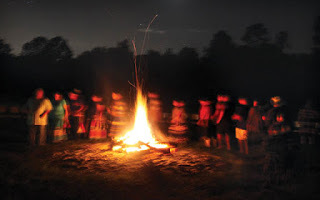 Since I have lived away from the Cherokee Nation in adulthood, I have seldom had an opportunity to attend a stomp dance. When I do, they are not as elaborate as those of my childhood, usually no longer including the stickball games that used to accompany those of my childhood. However, the Cherokee stomp dance is still going strong in all the aspects of ceremony that make it so important. There is still the food, the focus on clans, the sacred fire, the men handing down the songs through the generations, the women with their shell shakers setting the rhythm of the dance, the spiral of prayer to the Creator. It is still as powerful as ever and as beautiful.
Since I have lived away from the Cherokee Nation in adulthood, I have seldom had an opportunity to attend a stomp dance. When I do, they are not as elaborate as those of my childhood, usually no longer including the stickball games that used to accompany those of my childhood. However, the Cherokee stomp dance is still going strong in all the aspects of ceremony that make it so important. There is still the food, the focus on clans, the sacred fire, the men handing down the songs through the generations, the women with their shell shakers setting the rhythm of the dance, the spiral of prayer to the Creator. It is still as powerful as ever and as beautiful.AT THE STOMP DANCE
Cars, trucks, all day coming.First the leaders and their helpersset up the cook shed,clean, rake the ball and dance grounds, refurbish the seven brush arborscircling the dance ground—helpers from each clan do this.
The women bring hot and cold dishes from home, begin to cook and cover tableswhile men build the sacred fire, centered in the dance ground’s circleto reflect the sun.
The crowd grows.Flirting, catcalling between young men and womenturns into challenge. Head for the ball ground,men grabbing ballsticks, women hands free—all the better to rest on a hip while calling a sassy retort.Game on, men against women,each plays by their own set of rulesto much laughter and hooting.The sad-eyed carved fish swimming through the airon top of the pole in the center of the ball groundwatches benevolently while the ball whizzes pastor—success!—strikes it.
Older women and others not playing call out encouragement and laughing insults.So do the older men, sitting in their lawn chairs. All the while, final preparations continuefor the main event, the dance.Women work on old cowboy boots,making sure their turtleshell rattleshanded down the chain of daughters,are securely fastened to the split-open tops of the boots.They try them on and stamp their feet hard to check the sound of the pebbles in the rattles,to make sure they won’t come loose.
Children are everywhere underfoot, watching ball game and sacred fire, sniffing around the cook shed, playing tag and hide-and-seekoutside the ring of clan shelters.The elders of each clan—Ani-Wahya (Wolf), Ani-Kawi (Deer), Ani-Tsisqua (Bird),Ani-Gilahi (Long Hair), Ani-Sahani (Blue), Ani-Wadi (Paint), and Ani-Gatagewi (Wild Potato)—settle into each brush arboras the cooks call out that the food is ready.Clan members bring food to the elders,join them or eat with families, friends.
Now, the food is eaten and dishes cleaned.Now, the turtledoves are calling as they nestle in to sleep.Now, the fireflies are taking to the air with children chasing.Now, the sun has set and the sacred fire brings back its light.Now, the women put on their rattle-sewn boots.Now, the old lead singer calls out the beginning, Now, his brothers and nephews echo their response.Now, his sisters and nieces step into the circle beside them. Now, the women set the rhythm with their fast turtleshelled feet.Now, the circle spirals out from the fire.Now, the dance can begin.
Published in Dark Sister(Mammoth Publications, 2018)
Published on December 11, 2019 08:59
November 30, 2019
Poems for Native American Heritage Month--"The Last Beloved Woman" and "Learning Cherokee"
I have been quite ill for months (in 3 months of being unable to swallow or eat much, I lost 50 pounds that the steroids had put on me ) and was coping with serious injury to my right shoulder, as well as steroid myopathy stealing my ability to stand or walk much, before that. As a consequence, I have neglected this blog for too many months.
Here it is the end of Native American Heritage Month, and I have not posted one essay or poem for it--when I normally post one several times a week throughout the month. So, today, I'll post two poems for the last day of Native American Heritage Month as a bare minimum I can do for the one month a year the rest of the country remembers we are still here. And perhaps, on my own, I will extend Native American Heritage Month to the rest of the year on this blog.
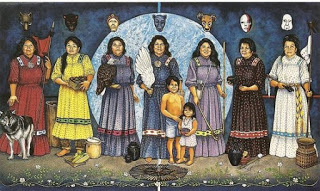 She Speaks for Her Clan by Dorothy SullivanThis painting is one of my favorites--"She Speaks for Her Clan" by Dorothy Sullivan--and it illustrates Cherokee clan mothers, and for Blue Clan in the center, it pictures Wilma Mankiller as a Beloved Woman. This first poem deals with Beloved Women and the last Beloved Woman of the Cherokee before Removal split the tribe into three different nations. The second poem is a history of Cherokee encounters with Europeans in the guise of a language lesson.
She Speaks for Her Clan by Dorothy SullivanThis painting is one of my favorites--"She Speaks for Her Clan" by Dorothy Sullivan--and it illustrates Cherokee clan mothers, and for Blue Clan in the center, it pictures Wilma Mankiller as a Beloved Woman. This first poem deals with Beloved Women and the last Beloved Woman of the Cherokee before Removal split the tribe into three different nations. The second poem is a history of Cherokee encounters with Europeans in the guise of a language lesson.
THE LAST BELOVED WOMAN
Mother-clanned, the Cherokee towns, farms, and orchards, before all were stolen by those who forced the People on the long dread march west,belonged to the women, as did the children.
Nanye-hi, in 1738 born a daughter of the Wolf Clan, married Kingfisher, bore two children.During the Battle of Taliwa,she took her dead husband’s place,avenged his death, rallied warriors to victory,became a ghi gua.
Ghi gua, or Beloved Woman, title given by the seven clans to women who had served the Peopleas warriors and mothers both.Given a swan’s wing and special place in council,the ghi gua even held a voting seat on the Council of Chiefs. With their swan wings,they had the final say over whether the town went to war.
Today I watch women go to a war foolish as many,often leaving babies behind.Something’s out of synch, though.It’s still old men, who’ve never set foot on battlefieldnor suckled a babe, making decisions of war and peace.
Nanye-hi married again, a white man named Ward.Nancy Ward, the ghi gua, respected among Cherokees and settlers, warned settlements of impending attacks, to prevent complete war,negotiated treaties, all later broken.
At the end of life, settlers forced Nanye-hi from her home to die before the Trail of Tears.Trying to fit the white man’s mold,the Cherokee shed their councils.No place for Beloved Women.Nanye-hi Nancy Ward was the last ghi gua.
We need women with swan wings.
Published in Dark Sister(Mammoth Publications, 2018)
LEARNING CHEROKEE
O si yo. Hello. To hi tsu? How are you? Di qho ye ni u si wha. My hands are empty.Ga do u s di hi a? What is this?Gi ga ge i. Red.U ne ga. White.A ma. Water.Wa do Thank you.Yo ne ga. White man.Nu la. Hurry.Yv wi. The people.Ga tli da. Arrow.Ga yo tli gadO hi. Just a little land.A ge ya. Woman.A ni s ga ya. Men.A sa no. Dress.Qua na hl gv ni. Peach trees.Ga yo tli gado hi. Just a little land.A ha ni. Field.Yv gi. Nail.Ga yo tli gado hi. Just a little land.Tsa ga se sde sdi! Be careful!A de la. Money.Tla hv. Absolutely not.Ni gad a gado a! All your land!Gi ga. Blood.E hi sti yu. Pain.
Published in Dark Sister(Mammoth Publications, 2018)
Here it is the end of Native American Heritage Month, and I have not posted one essay or poem for it--when I normally post one several times a week throughout the month. So, today, I'll post two poems for the last day of Native American Heritage Month as a bare minimum I can do for the one month a year the rest of the country remembers we are still here. And perhaps, on my own, I will extend Native American Heritage Month to the rest of the year on this blog.
 She Speaks for Her Clan by Dorothy SullivanThis painting is one of my favorites--"She Speaks for Her Clan" by Dorothy Sullivan--and it illustrates Cherokee clan mothers, and for Blue Clan in the center, it pictures Wilma Mankiller as a Beloved Woman. This first poem deals with Beloved Women and the last Beloved Woman of the Cherokee before Removal split the tribe into three different nations. The second poem is a history of Cherokee encounters with Europeans in the guise of a language lesson.
She Speaks for Her Clan by Dorothy SullivanThis painting is one of my favorites--"She Speaks for Her Clan" by Dorothy Sullivan--and it illustrates Cherokee clan mothers, and for Blue Clan in the center, it pictures Wilma Mankiller as a Beloved Woman. This first poem deals with Beloved Women and the last Beloved Woman of the Cherokee before Removal split the tribe into three different nations. The second poem is a history of Cherokee encounters with Europeans in the guise of a language lesson.THE LAST BELOVED WOMAN
Mother-clanned, the Cherokee towns, farms, and orchards, before all were stolen by those who forced the People on the long dread march west,belonged to the women, as did the children.
Nanye-hi, in 1738 born a daughter of the Wolf Clan, married Kingfisher, bore two children.During the Battle of Taliwa,she took her dead husband’s place,avenged his death, rallied warriors to victory,became a ghi gua.
Ghi gua, or Beloved Woman, title given by the seven clans to women who had served the Peopleas warriors and mothers both.Given a swan’s wing and special place in council,the ghi gua even held a voting seat on the Council of Chiefs. With their swan wings,they had the final say over whether the town went to war.
Today I watch women go to a war foolish as many,often leaving babies behind.Something’s out of synch, though.It’s still old men, who’ve never set foot on battlefieldnor suckled a babe, making decisions of war and peace.
Nanye-hi married again, a white man named Ward.Nancy Ward, the ghi gua, respected among Cherokees and settlers, warned settlements of impending attacks, to prevent complete war,negotiated treaties, all later broken.
At the end of life, settlers forced Nanye-hi from her home to die before the Trail of Tears.Trying to fit the white man’s mold,the Cherokee shed their councils.No place for Beloved Women.Nanye-hi Nancy Ward was the last ghi gua.
We need women with swan wings.
Published in Dark Sister(Mammoth Publications, 2018)
LEARNING CHEROKEE
O si yo. Hello. To hi tsu? How are you? Di qho ye ni u si wha. My hands are empty.Ga do u s di hi a? What is this?Gi ga ge i. Red.U ne ga. White.A ma. Water.Wa do Thank you.Yo ne ga. White man.Nu la. Hurry.Yv wi. The people.Ga tli da. Arrow.Ga yo tli gadO hi. Just a little land.A ge ya. Woman.A ni s ga ya. Men.A sa no. Dress.Qua na hl gv ni. Peach trees.Ga yo tli gado hi. Just a little land.A ha ni. Field.Yv gi. Nail.Ga yo tli gado hi. Just a little land.Tsa ga se sde sdi! Be careful!A de la. Money.Tla hv. Absolutely not.Ni gad a gado a! All your land!Gi ga. Blood.E hi sti yu. Pain.
Published in Dark Sister(Mammoth Publications, 2018)
Published on November 30, 2019 12:13
June 13, 2019
Consumed by Politics
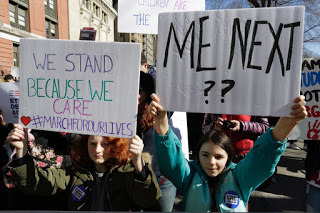
My husband told me last night, “It's hard not to be consumed by the disaster of this presidency. Every day there's some new outrageous thing, and it's become so clear that the stakes are higher than they've ever been.”
I had to agree, but I don't know if I want to go through the next years with some new outrage dominating the news every day. I wistfully long for the days when I could believe that the president, the Senate, and the courts had the best interest of the country at heart, even if the people in those seats came from the party I did not want to vote for.
Fortunately, I only face it all at night because I'm busy writing the ending to my book during the day with the internet off. Believe me, living in a world that's under attack by aliens that can even destroy Earth's gods to take their power, let alone puny mortals, is a much happier place to be than the real world I come back to in the evenings.
In my book, I've had to go back in time to 1812 to New Madrid, Missouri, a place and a time that was full of naturals horrors and wars. The New Madrid Earthquake that everyone talks about was actually three (or perhaps four, depending on which modern expert you choose) of the largest earthquakes ever recorded in the United States—and over 2,000 other earthquakes in a four-month period. The ground quite literally never stopped shaking, making even walking difficult. Huge rifts opened up and stayed for a century until dredging finally destroyed them. Eerie lights, explosions, and rumbling thunder came from the ground beneath. New lakes, swamps, and sunken lands were formed. Small volcanoes of salt, coal, tar and mud littered the landscape. The earth underneath the bed of the Mississippi River was shoved upward with such force that waterfalls formed in the middle of the river where there had been none before, and the river appeared to change direction and run upstream on two different occasions. The few towns that had been established were mostly or completely destroyed, and the biggest earthquakes were felt in Boston, New York, and Washington, D.C., where American leaders were dealing with the frightening lead-up to the War of 1812 against Britain.
Meanwhile, fifty miles from New Madrid, in Cape Girardeau, Missouri, the great warrior and strategist, Tecumseh, was meeting with his Shawnee and Delaware allies that might have helped him defeat the American colonists and stop the course of Manifest Destiny, confining the new country to the Eastern seaboard with an unprecedented alliance of independent Native nations defending the western two-thirds of the continent. While Tecumseh was there, American soldiers would attack his home settlement and burn it to the ground, leading to a series of events that would eventually destroy his burgeoning movement to hold back the destructive tidal wave of white settlement.
Dealing with this period in history reminds me that there have been troubled times before this, that there have been dangerous threats that were avoided or overcome and dangerous threats that were almost averted but occurred despite the best efforts—and people still managed to have lives and survive. I suppose we always think the times we're living in are the toughest and most dangerous.
I can't swear off the political news, so I suppose I'll continue to hear about each day's new disaster or outrage every evening. Fortunately, I'll still have the world of my book to exist within all day, and that should help me view it all with some little perspective. The sky is always falling, but somehow we manage to muddle through anyway.
Published on June 13, 2019 07:54
April 25, 2019
I GIVE YOU TO RIVER, a poem for National Poetry Month
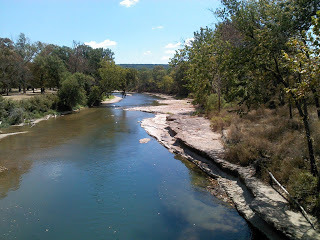 Like my ancestors before me, I love rivers. The peace of running water always calms me, watching it ripple past slowly, hearing the murmur of the water over rocks and branches and the swish of it against the banks, spying the many lives that live along the river--fish, turtles, snakes, muskrats, beavers, hawks, and eagles. For millennia, my people have always chosen to settle near rivers.
Like my ancestors before me, I love rivers. The peace of running water always calms me, watching it ripple past slowly, hearing the murmur of the water over rocks and branches and the swish of it against the banks, spying the many lives that live along the river--fish, turtles, snakes, muskrats, beavers, hawks, and eagles. For millennia, my people have always chosen to settle near rivers.
When I was growing up, I was taught to go to water when troubled or ill. Running water is strong medicine, good medicine. We pray next to it, and then use it to wash away whatever is troubling our hearts, minds, or bodies. Sometimes a creek or brook will work for me, but if I'm truly heartsick, I seek out a river.
This poem is another in a series of poems that I have posted to celebrate National Poetry Month. It is an exploration of this practice of going to water when troubled. In the worst kind of pain and grief, sometimes only a river can provide any release. For a healing ceremony, one needs to build a fire, say the right prayers, make an offering, but sometimes in the worst straits, it can be simply you and the river.
I GIVE YOU TO RIVER
Turning to the water for releasefrom my troubles, from you,I write your name in my palm with my finger,then brush off the invisible lettersinto the river currents passing at my feet.I ask River to carry them out of my heart and mind,carry them away from my life, remove all that darknessthat is you infesting my mind against my will,replaying memories that were nothingbut playacting on your part,though my heart tries to find excuses,for all the deliberate pain.I have to face it finally—there are none.Hard to believe, but even harder to findI still long for you.This stubborn heart won’t give up.So I barricade it, keep it safe from its stupid fidelity,while I wait for River to carry out magic,carry your name and games far from me,set me free finally with the power of moving water,my own inborn element,which carves memories of trauma from the earth itselfand leaves wondrous scars.
Published in Dark Sister (Mammoth Publications, 2018)
Published on April 25, 2019 08:29
April 20, 2019
SPELL FOR BANNING A BOOK, a poem for National Poetry Month
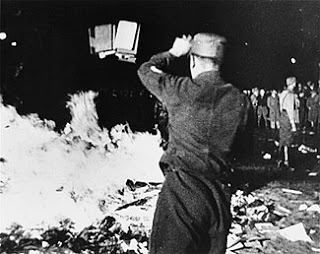 We are living in dark times. We are living in times when lies are elevated above the truth and fantasies and “alternative facts” are elevated above fact and reality by our leaders and those in power over us. We are living in times when children kept in cages after being torn away from their parents are said to be in “summer camps.” We are living in times when the free press is called “the enemy of the people.” In fact, we are living in times that become more and more reminiscent of the rise of Nazi Germany than we would like to believe or experience.
We are living in dark times. We are living in times when lies are elevated above the truth and fantasies and “alternative facts” are elevated above fact and reality by our leaders and those in power over us. We are living in times when children kept in cages after being torn away from their parents are said to be in “summer camps.” We are living in times when the free press is called “the enemy of the people.” In fact, we are living in times that become more and more reminiscent of the rise of Nazi Germany than we would like to believe or experience.
We are living in times when the president of the United States tweets out his desire to censor newspapers, television news programs, entire sections of the press, and published books. So far, he has not succeeded in this, even though he daily tweets out his condemnation of “fake news” and his desire to change the libel laws to undercut the First Amendment, but the situation looks grimmer every month and week and day. It reminds me forcibly of the book burnings of the Nazi regime.
One of the earliest and most important steps a dictatorship must take is to seize control of the narrative. Thus, we see the multitude of lies and the constant accusations of fake news. The next step is censorship, which grants so much control over what the populace can know, and after censorship comes the destruction of books and magazines which contain the truth and not the regime’s propaganda. Along with this, we always find persecution of journalists and writers and poets who are not willing to spout the regime's line. Unfortunately, history gives us all too many examples of this through the ages. In the photograph at the top of this blog, Nazis are burning books in Germany.
This poem is about this process of banning books, which continues to be a threat down through history. Not too long ago, we had books by Latino and Native and Black authors banned in public school districts in the Southwest, which led to a band of activists gathering those forbidden books and smuggling them across multiple states into those school districts to educate those children. This was called the Librotraficante movement and led to the courts reinstating those books in the school district. Vigilance is the price of freedom.
SPELL FOR BANNING A BOOK
First, find a censor.This will be hard—not that censors are rare,but they are adept mimics.Do not be fooled. No matterhow benevolent its disguise, a frightened censor is dangerous. Approach with caution. To safely capture itfor your spell, you must circlethe censor chanting soothingnonsense syllables.It is meaning that terrifiescensors.
Surround the stupefied censorwith charms made from advertisingphotographs of a mythical golden age—smiling mothersin high heels and aprons, silent fatherskeeping sentinel on horseback, sexlesschildren never askingquestions. Sacred to the censor,such charms have powerto blind it.
Select the bookyou want banned.Set it outside the circleof charms, and carefullyremove the charm nearest so the censor can detectthe presence of an attemptat meaning.
Protect yourself.Enraged censors have been knownnot only to ban booksbut to burn themand then press on to people.
Published in Dark Sister (Mammoth Publications, 2018)
Published on April 20, 2019 16:22
April 16, 2019
COMING AROUND AGAIN--a poem for National Poetry Month
 It has been almost 5 years since I began my battle with breast cancer. This poem for National Poetry Month looks back on that time and on other times before that when death was a possibility for me. One advantage of becoming an elder is that death is no longer the boogeyman, the monster in the closet.
It has been almost 5 years since I began my battle with breast cancer. This poem for National Poetry Month looks back on that time and on other times before that when death was a possibility for me. One advantage of becoming an elder is that death is no longer the boogeyman, the monster in the closet.
This poem speaks to that love for life but keeps us clinging to the mortal realm, even as different aspects of our bodies weaken or begin to fail. It becomes possible to take the long look, and when that becomes possible, fear dissolves.
COMING AROUND AGAIN
Three years ago—three years of poison and desperate positive thinking—they cut off my breast,carving out the lymph nodes of the underarm as well.They left me with an ugly, puckered scar14 inches long and 3 inches wide,raised one-half to one inch highalong its length, and anotherincision 3 inches below that scarwhere a length of tubing insertedinto the chest drainedblood and lymph into an attached bagfor 3 ½ pain-filled, sleepless weeks.
Death has come looking for me before thisseveral times. I have always tricked herinto leaving me to my life a little longer,Scheherazade putting the random scenes of daily living into dramatic narrative,heightening conflict and tension, generating suspense, embellishing dull parts to create more spark and excitement,adding touches of humor to lighten the mood,a story playing out in front of herto which she needs to know the endingbefore she brings down the final curtain.I’ve grown familiar with Death’s face,can read it to tell if I need to spice up the storybecause she’s losing interest. Old friend and familiar, she bears no horror for me any longer.
I have seen the long view through her eyes,the sacred labyrinth of galaxiesspinning out of control throughout the universepulling apart in spiral motion, eternaldissipation of energy rippling outwardwith magic like the violent change broughtby tropical storm clouds seen from the air,galactic snake coiling around stars and planetsand black holes whirling like waterdown a drain, sucking all matter and energywithin reach, voracious maws, widdershins,sunwise, ears of creation cockedfor the song, symphony, story, viningthrough the nebulae, gathering tensionand force, the vast’s giant spring pulled taut,ready to snap back into the kaleidoscope, force of tornadoes, whirlwinds, passing into the still eye surroundedby the stomp dance of the stars,Creator’s medicine wheel, coming,going, bringing, leaving, giving, taking,moving up and down around the spiralof time, infinity’s tilt-a-whirl.
Remaining attached to this life, these loved people,I have no wish to join the stardust spiral danceof destruction and creation before I must.I’ll stay here in this incarnation as long as I can,loving this insane world’s dark and light momentsand the people, trees, birds around me, clinginguntil the last to its chiaroscuro, yin and yang. Still, I won’t fall screaming into the voidwhen my time is up. I’ve seen the wheel of fortunethat is the cosmos. Life is circular, grinding all of usinto crumbs of creation, raw material for new wonders.I’ve promised myself and lovely bony Ms. DeathI will embrace my ride on the celestial merry-go-round.But the story’s not over yet—there’s at least one more chapter
Published in Dark Sister (Mammoth Publications, 2018)
Published on April 16, 2019 07:53
April 11, 2019
WHAT CROW SAYS--a poem for National Poetry Month
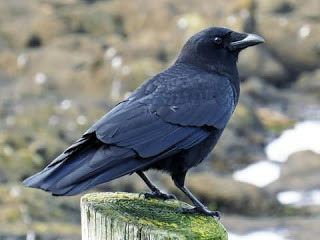 I have a strong propensity for crows. They're birds that don't get the love and respect that other birds do because they're not as flashy in appearance and their voices are harsher, even though they are classified as songbirds.
I have a strong propensity for crows. They're birds that don't get the love and respect that other birds do because they're not as flashy in appearance and their voices are harsher, even though they are classified as songbirds.Crows are intelligent, can make tools and remember the faces of those humans who have been a threat to them or their community, even have rituals to mourn their dead. They often bring us messages of wisdom from the Creator and show us the way when we need guidance.
This poem is the first in a sequence of mine called "First Cousins Speak." In these poems, some of our relatives in the larger world discuss humans, those troubled, puzzling late-come additions to Creation.
WHAT CROW SAYS
This is how gods are made.The land is wild and free, soil just beginning to cover the warm rock.One day, the stone lights upwith the dreams of animals.Out of the shining,something other awakens.These things happen so easily.Nature is crowded,everything intent on being warm.Who knew what damage dreams could wreak?
This furless, clawless thing created from whatever’s wasted or not wanted in us,we watched it arisewalking on two feet like Bearbut so weak and slow.Bear can outrun a horse,kill a deer with one blow.It should have died but didn’t.Some tenacity kept it aliveand breeding and changing the very world around it
We all spoke the same languageuntil that changed, too.Now we’re left with consequences.Now we are the other, everything other to this being.We are the constant target in the crosshairs.Now we live with the burden of being seen,living into our observed death.Great plans never work out.Chaos is forever seeping in.All it takes is a crack in creationlike this to ruin everything.
Here is a wound no spell can heal.We’ve tried them all.Not even Spider can weave us whole again.Spoilage creeps over the whole land.Cherish your wildness.It’s all we have left.Live close to the edge.
Published in Dark Sister (Mammoth Publishing, 2018)
Published on April 11, 2019 07:42
April 8, 2019
Tallgrass--a poem for National Poetry Month
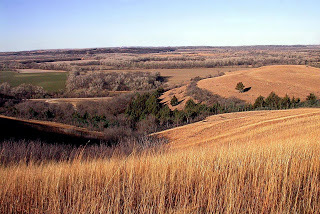 One of my favorite places on the planet is the Flint Hills of Kansas. The Flint Hills is the largest surviving Tallgrass Prairie in the country, 4.5 million acres of bluestem and wild animals and cattle and tough people, all survivors. I went to school there, and my parents are buried there.
One of my favorite places on the planet is the Flint Hills of Kansas. The Flint Hills is the largest surviving Tallgrass Prairie in the country, 4.5 million acres of bluestem and wild animals and cattle and tough people, all survivors. I went to school there, and my parents are buried there.
My computer operating system keep showing me scenes of landscape from around the world that are supposed to be breathtakingly beautiful, and they often are. Still, I know people too drive I-70 west or east through the Flint Hills and insist that the Kansas landscape is just flat and boring. I insist that they must be lying or blind. The Flint Hills inspire me so much that I've written the number of poems about them, and I thought I would put this one up for National Poetry Month to remind us all of the quieter beauty that often surrounds us while we are seeking after what we consider the exotic or fashionable.
TALLGRASS
The prairie is a tough place.Formed when the Rocky Mountain rainshadow killed off the trees,millions of buffalo grazed its big bluestem,turkeyfoot, sideoats, switchgrass, grama, Indiangrass, sweetgrass, prairie dropseed, buffalograss,for millennia, but, big as a nightmarewhen you encounter one up close,the buffalo never defeated the prairie.
Summer in tallgrass lands is harsh—blazing hot sun, only occasional rain in torrents.Summer turns the plains into grassy desert,But those grass roots plunge deep, deep into the earth, some twelve or more feet under the surface.The soil under a prairie is a dense mat of tangled rootstock, rhizomes, tubers, and bulbs.Those roots hold out against droughtand preserve the soil against thunderinggullywashers and toadswampers.Summer never defeated the prairie.
Sometimes lightning strikes,and fire races across the landscapelike water poured out on concrete,spreading out with amazing speed and inevitability.The prairie compensated by making seedsthat need to pass through flame to germinate.Fireproof seeds, what an invention!The tribes learned to set controlled firesto bring back gayfeather, blazing star, prairie clover.Now, ranchers burn the prairie each spring.Fire never defeated the prairie.
As for winter, the waist- and shoulder-high grassestriumph over the snow, spreadinglarge swathes of sun-colored grassesacross the scene, only occasionally punctuatedby a spread of snow along the meandering pathswhere animal and human feet have trodden.The prairie just absorbs the snow,swallowing it down to build stronger, deeper rootsto withstand summer’s hot, dry onslaught.Winter never defeated the prairie.
Buffalo, white-tailed deer, antelope, pronghorns,gray wolves, coyotes, bobcats, cougars, red foxes, black-footed ferrets, badgers, shrews, skunks,raccoons, possums, black-tailed prairie dogs,jack rabbits, prairie chickens, bull snakes,and the occasional human for centuries made trails and paths through the grasses by trampling them down or cutting their stems. If paths are not continually maintainedby a great deal of manual labor,they disappear like smoke.The prairie will always take them back.The only thing that ever defeated prairiewas a man with a steel plow.Published in Dark Sister (Mammoth Publishing, 2018)
Published on April 08, 2019 06:40
April 2, 2019
AWAKE AT THE END OF NIGHT--a Poem for National Poetry Month
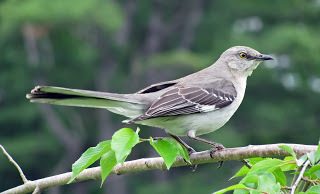 As National Poetry Month begins, I am still battling with this shattered right shoulder that has a destroyed rotator cuff. The good news is that I have finally recovered from the awful illness that help me and its grip much of this winter.
As National Poetry Month begins, I am still battling with this shattered right shoulder that has a destroyed rotator cuff. The good news is that I have finally recovered from the awful illness that help me and its grip much of this winter.
For my first National Poetry Month poem, I thought I would post “Awake at the End of Night,” in part because I am spending so many wakeful nights right now and have in recent months. The wonderful thing about the end of winter is that, during the worst wakeful moments late in the night as morning is approaching, now I can hear the cacophony of bird songs, and it is so welcome.
There is nothing so lovely as listening to a northern mockingbird sing in the dark. You will find that such an image or sound shows up in the number of my poems, simply because this bird is so important to me. I wish you all a month of marvelous poetry. I am enjoying all of the Poetry that is being posted on Twitter and on Facebook. I hope to post poems several times a week throughout the month on this blog, but I am teaching a pretty intensive class right now in writing the novel with lots of written assignments for the students, entailing lots of written feedback from me, so we'll have to see how the month goes.
AWAKE AT THE END OF NIGHT
Praise the mockingbird singing farewell to night.Praise the owl flying home with its mouse-feast.Praise the beetle scurrying from sudden light.Praise the moon sailing down to sleep.Praise the branches whipping the house in the wind.Praise thunder shaking windows and walls.Praise sheets of lightning flaring across the sky.Praise the seeds in darkest soil uncurling.Praise the tendrils of root and stem reaching out.Praise the worm that leaves riches in burrows behind it.Praise the rain coursing down the brick walls.Praise the blanket wrapping in our body heat.Praise the sound of your even sleep breathing beside me.Praise the body I wrap my leg around.Praise the heavy arm thrown over me.Praise the breath moving in and out between my mouth and yours.Praise the spirits of the sun and moon that live within us.Praise all things silent and hidden.Published in Dark Sister (Mammoth Publications, 2018)
Published on April 02, 2019 09:15
November 10, 2018
Whitewashing History--A Native American Heritage Month Essay

Our current president has a habit of insulting Native America, not only by calling Senator Warren “Pocahontas,” but by installing a portrait of Andrew Jackson, architect of Indian Removal and of genocide, in the Oval Office in the place of honor before bringing in Native Code Talkers to honor them for their contribution to the war effort in World War II. The worst, however, is when he says,“our ancestors tamed a continent,” and “we are not going to apologize for America,” referring to the destruction of millions of Native lives.
https://www.newsweek.com/donald-trump-tame-continent-america-945121?fbclid=IwAR1_NFFTv2-8BaoXNVFMlOWoYrnS_7MMmVofXMSQD5SesSqV7tQdu_mxQIg
“As a part of this second danger, one thing you must remember about doing research on other cultures in books, libraries, on the internet, is that much of it is wrong, accidentally or willfully. Accidentally, because journalists, anthropologists, other scholars, and explorers may have misinterpreted what they saw or heard or because—and this was common—their informants deliberately misinformed them to protect their people or to protect their own source of whatever the white man was providing them. Consequently, even primary sources from past times can be contaminated if they are “as told to” or are translated. Willfully, because a lot of that research was done by people, usually white men, who had an agenda that placed wealthy white male Europeans at the pinnacle of creation and everyone and everything else downhill from that, which led to eugenics and a lot of other horrid, stupid things. So there's your second caveat: You can do your research and still get it wrong in some way.”
This idea that there was no Native genocide because disease alone killed all the Indigenous peoples on the continent, leaving it conveniently vacant for Europeans is a race-based “intuitive” theory from the 1970s that has been refuted since the end of the 20thcentury by scholars actually working with primary documents and other evidence. The “virgin soil thesis,” based on the belief that Natives’ lack of immunities and their inept healers were responsible for their downfall, was propounded by Alfred Crosby in 1976. This theory was quite popular for a time early in the last half of the 20thcentury because it placed all the responsibility for the massive death counts among Indigenous peoples after European arrival on the Indigenous people themselves because they were genetically weak, lacking in acquired immunity, and lacking in competent medical care, rather than on the violence waged against them by Europeans from the very beginning of contact and continuing into the early 20thcentury.
As David S. Jones points out in “Virgin Soils Revisited” in The William and Mary Quarterly(October 2003), “Perhaps the idea that Indian depopulation can be explained by the Indians' lack of immunity took hold because it served an ideological purpose. White physicians in South Africa, for instance, used virgin soil theory to explain the prevalence of tuberculosis among African mine workers. … theories of immunological determinism can still assuage Euroamerican guilt over American Indian depopulation, whether in the conscious motives of historians or in the semiconscious desires of their readers. … the epidemics among American Indians, despite their unusual severity, were caused by the same forces of poverty, social stress, and environmental vulnerability that cause epidemics in all other times and places.”
David Stannard argued in American Holocaust: Columbus and the Conquest of the New World (New York, 1992) that "by focusing almost entirely on disease, by displacing responsibility for the mass killing onto an army of invading microbes, contemporary authors increasingly have created the impression that the eradication of those tens of millions of people was inadvertent."
Paul Kelton, author of Cherokee Medicine, Colonial Germs: An Indigenous Nation’s Fight Against Smallpox, 1518-1824 (University of Oklahoma Press, 2015) and "Avoiding the Smallpox Spirits: Colonial Epidemics and Southeastern Indian Survival," Ethnohistory, 50 (Fall 2003), is yet another of the many scholars who have gone to actual primary documents and other evidence to examine this thesis as it pertained to the Cherokee Nation and found that many epidemics were not as severe as had been claimed or assumed and that the Cherokee healers and spiritual beliefs were as effective as the primitive medicines of the Europeans in dealing with smallpox. He also discusses the part that the overwhelming violence—the bitter wars that decimated population, the actions of the white settler armies in destroying towns, homes, farms, and stored harvests in an attempt to starve the Cherokee, the forced surrender of huge swathes of territory necessary for a hunting-gathering existence—played in rendering the surviving remnant of Cherokees susceptible to smallpox and other illnesses.
As far as the idea that the Europeans thought the continents were empty, there is such abundance of evidence of the contrary that the idea that academics would put that forth as fact in university classrooms and scholarly publications is ludicrous. The history of the United States is filled with statesmen lamenting the fact that American Indians own the land they want and with their plans and chicanery to force them to sell or give it or to just force them off the land. That relentless push westward that came to be called Manifest Destiny in the 1840s continued from the first landings of Europeans on the Atlantic Seaboard through the war with Tecumseh, the Indian Removal Act and many Trails of Tears (killing tens of thousands—one would think that alone would qualify for designation as ethnic cleansing or genocide), to the Indian Wars of the 19thcentury, while in California, the Spanish mission system devastated the Native population, and when the Americans took over, they offered official government bounties on Indian heads. Not exactly the acts of people who thought the continent was vacant.
As far as various academics’ statements that the destruction of the native population could not be genocide because it was not “deliberate or on purpose,” I offer a tiny sampling of the quotations from speeches, letters, newspaper articles, and other documents to be easily found in a search through American history. The researcher will easily find many, many more quotations from Franklin, Jefferson, Monroe, Theodore Roosevelt, Lincoln, and many other Founding Fathers and presidents, as well as governors and other civic leaders, all speaking of the need to wipe out the Indigenous population of the continent.
“The only good Indians I ever saw were dead.” – General Phil Sheridan
“Damn any man who sympathizes with Indians. I have come to kill Indians, and believe it is right and honorable to use any means under god’s heaven to kill Indians! Scalps are what we are after… I long to be wading in gore!” – Rev. John M. Chivington, co-founder of the University of Denver and leader of the Sand Creek Massacre
"Civilization or death to all American savages." – Major James Norris
“Discovery gave an exclusive right to extinguish the Indian title of occupancy, either by purchase or by conquest.” – Chief Justice John Marshall
“The immediate objectives are the total destruction and devastation of their settlements and the capture of as many prisoners of every age and sex as possible. It will be essential to ruin their crops in the ground and prevent their planting more.” – General George Washington, orders to troops, 1779 [Those captured prisoners of every age and sex were then sold as slaves to the West Indies.]
This erasure of the destruction of the Indigenous peoples of the Americas is a pervasive problem in this country. Witness the proponents of the virgin soil thesis of the past century, who were the modern versions of the Puritans rejoicing, after one massacre, that they hadn’t had to commit another due to disease and starvation, thanks to the mighty hand of God. The history of this country is a history of broken treaties with Indian nations, a history of massacres and forced removals that killed many thousands, a history of continuous greed for the land and other possessions of the Indigenous people and violence and wars to obtain what was so desired. The history of this country is a history of theft and slavery, a history of prisoner of war camps called reservations (that Hitler studied and used as models for his concentration camps—he admired the efficiency of the U.S. genocide of its Native population and emulated it in his own Final Solution), a history of official bounties on Indian heads, skins, and scalps. The history of this country is a history of kidnapping children and imprisoning them in boarding “schools,” rife with physical and emotional abuse—“Kill the Indian to save the man!”—a history of forced sterilization and medical experimentation without consent. If you look at it openly, it adds up to something that can hardly be called anything but ethnic cleansing and genocide.
So, of course, as a country, we don’t look at it openly—and when someone forces us to face it, we cry, “Not true! Get over it! Victim studies! PC,” anything we can to make the awful truth go away and be buried once again. Still, it happened, and the results of it remain with us, especially embedded in Native communities and lives. American popular culture is still in the grip of Manifest Destiny and “the only good Indian is a dead Indian” with the enshrinement of the Hollywood Western as one of our great art forms. I would hope for better from academia, however, where the truth is supposed to have value above belief in American exceptionalism, but I am often disappointed.
This situation is a perfect example of why we need ethnic studies classes—and why they should be part of the required core of classes and not electives that only a few students will take. Our citizens need to know our history, to know what we’ve done as a country, to know how we got here today, to know the truth and not the photoshopped Hollywood version of who we really are. Without that knowledge, we will continue to make the same mistakes, doomed to repeat the past we choose not to know.
Published on November 10, 2018 19:57



